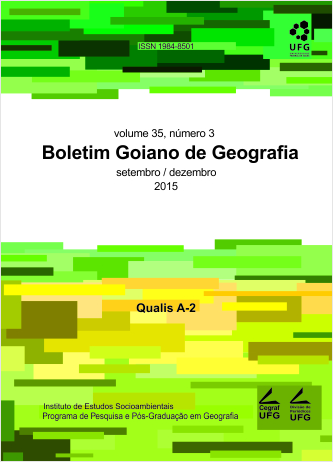MAPPING OF THE ENVIRONMENTAL IMPLICATIONS OF ONSHORE OIL PRODUCTION IN THE MUNICIPALIT Y OF CARMÓPOLIS, STATE OF SERGIPE, BRAZIL - DOI 10.5216/bgg.v35i3.38835
DOI:
https://doi.org/10.5216/bgg.v35i3.38835Abstract
The Carmópolis Field, which is the largest set of onshore oil fields in Brazil, is responsible for the most part of onshore oil production in Sergipe State. Despite its economic importance, it causes significant environmental damages, endangering the health of the population and the quality of Carmópolis landscape. In order to supportmanagement actions that minimize or reimburse the environmental impacts, following the legislation and protecting the remaining natural ecosystems, this study aimed to analyze the spatial implications of onshore oil production of Carmópolis city; mapping the use of soil and calculating the quality index of the landscape using landscape ecology as theoretical and methodological basis. It was found that a) the landscape qualityindex of Carmópolis is 0,54, classified as regular; b) oil wells, roads and pipelines, fragment the city landscape, affecting the resilience of natural ecosystems.
Keywords: landscape quality, geoprocessing, landscape ecology.
Downloads
Published
How to Cite
Issue
Section
License
Authors will not receive any payment for publishing their work in Boletim Goiano de Geografia. Therefore, they must grant all rights to the journal. However, they are entirely and exclusively responsible for the published contents, and editors are free to make corrections or adjustments to texts in conformity with publication guidelines.







